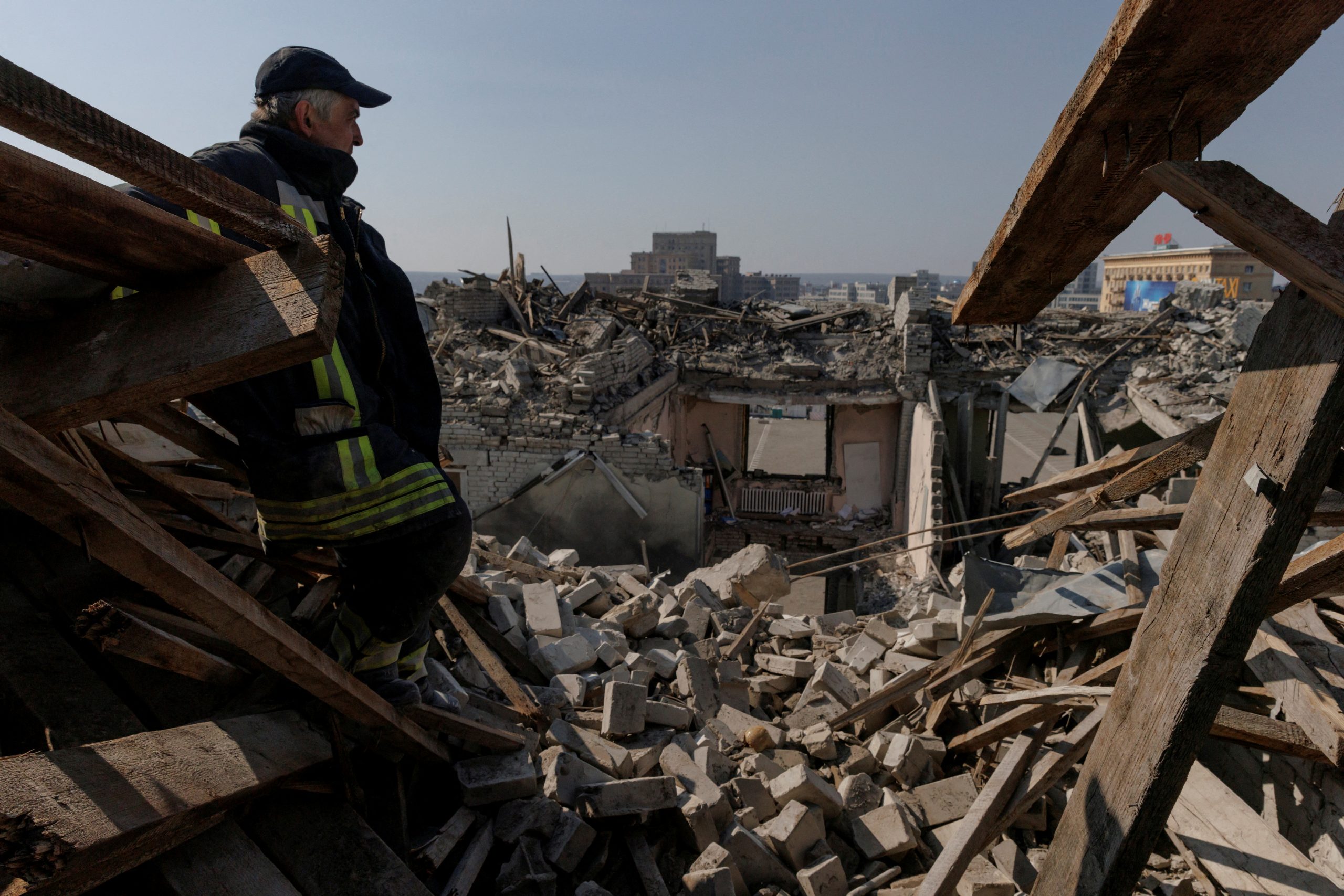
Lauren Moye, FISM NEWS
[elfsight_social_share_buttons id=”1″]
The Russian word “children” painted outside the Mauripol theater so that it could be viewed from airplanes didn’t discourage the bombing of the building that served as a civilian shelter for those trapped within the city. Now city officials have announced that around 300 people lost their lives last weekend in what has been described as the deadliest single attack initiated by Moscow.
“Unfortunately, we start the day with bad news,” the city council said through Telegraph on Friday. “There is information, based on eyewitnesses, that about 300 people died in the Drama Theater in Mariupol as a result of a bombing by Russian aircraft.”
The attack occurred on March 16. City officials previously said up to 1,300 individuals had sought shelter at the theater. Russian forces encircled the port city weeks ago, creating a dire situation for residents left in a city without power and facing frequent bombardment from the invaders.
Russia denies intentionally targeting civilian structures.
“We still do not want to believe in this horror,” the council added. “We still want to believe that everyone managed to escape. But the words of those who were inside the building at the time of this terrorist act say otherwise.”
One official said that there were around 600 survivors, many of whom are now en route from Mauripol to Zaporizhzhia, which contains the nuclear power plant that Russian forces held hostage earlier in March.
Numbers could not be independently verified. The council’s statements are based on eyewitness accounts.
In a related Friday update, the U.N. human rights team in Ukraine shared reports of mass graves, including one with up to 200 bodies, within the port city. While this team has counted 1081 civilian deaths since Russia first invaded on Feb. 24, none of these counts have included numbers from the cut-off Mauripol.
“The extent of civilian casualties and the extent of damage raises serious concerns and suggests strongly there have been violations of international humanitarian law and in particular of indiscriminate attacks,” Matilda Bogner, head of the U.N. human rights team, said.
The Russian Defense Ministry also announced on Friday that the first phase of its invasion operation was almost complete.
“The combat potential of the Armed Forces of Ukraine has been considerably reduced, which … makes it possible to focus our core efforts on achieving the main goal, the liberation of Donbas,” said Sergei Rudskoi, head of the Russian General Staff’s Main Operational Directorate.
This statement marks a reframing of Russia’s previously stated goals of “demilitarizing” and “denazifying” Ukraine. It also confirms the views of world military leaders that noted a ground invasion aimed at capturing the capital city of Kyiv has mostly ended, although Moscow continues to use airstrikes against the city.
“It is likely Russia will continue to use its heavy firepower on urban areas as it looks to limit its own already considerable losses, at the cost of further civilian casualties,” the U.K. Ministry of Defense said in its latest intelligence briefing on the war.
Ukrainian President Volodymyr Zelenskyy attributed the scaled-back goals to his military’s “powerful blows.” He added, “Our defenders are leading the Russian leadership to a simple and logical idea: we must talk, talk meaningfully, urgently and fairly.”
So far there have been no results from peace talks between the countries.
Some Western officials have warned that Moscow has no intention of pulling back on its goal of capturing Kyiv. Instead, they expect to see an additional 10 battalions, representing a thousand new soldiers, deployed by Moscow along with more tanks and heavy artillery.
